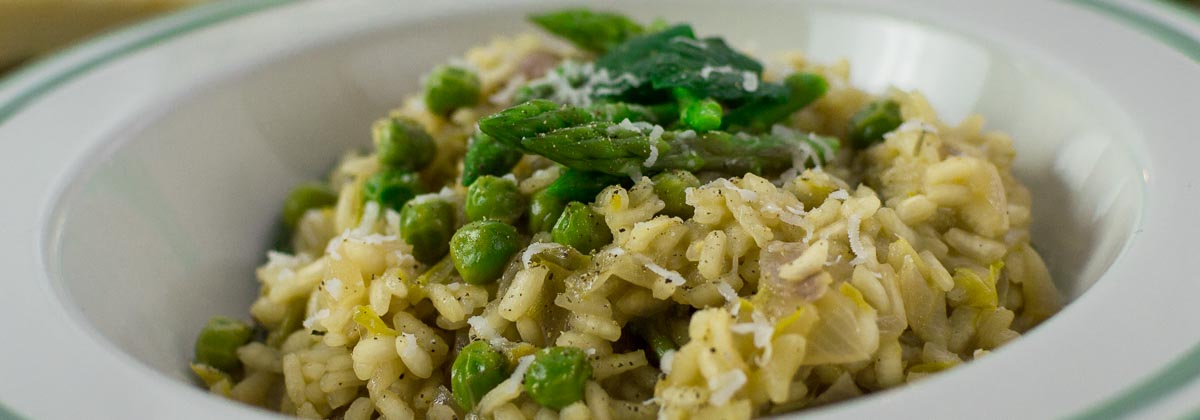
A typical northern Italian (Lombardy) rice dish cooked in broth to a creamy consistency. The main ingredients are rice, broth, onions, butter and Parmesan cheese. In this recipe, I decided to add a few fresh green vegetables for you to enjoy.
Ciao a tutti! Oggi abbiamo un piatto delizioso che sono sicura che lo avrete già gustato in qualche ristorante se non lo avete anche preparato a casa. Il piatto che andiamo a preparare oggi è un risotto che molte volte viene preparato come un primo. L'unico caso in cui questo piatto viene servito come secondo è se facciamo o ordiniamo un risotto alla milanese. In questo caso, il risotto viene servito con un ossobuco (braised veal).
As I've just been explaining in this introduction, today we'll be making a risotto, which I'm sure you must have seen and tasted before. In Italy, the risotto is mainly served as a first course. However, if you're having the risotto alla milanese, you'll be able to have that as a main course as it's served with braised veal. For this recipe, we'll concentrate on making the risotto as a first course.
Risotto is typically a northern Italian rice dish cooked in a broth derived from either meat, fish or vegetables. The rice is brought to a creamy consistency also by adding butter and Parmesan cheese. Other typical ingredients are wine and onions. This way of cooking rice is probably the most common way rice is cooked in Italy. In this recipe, I decided to add also some other flavours from some fresh green vegetables.
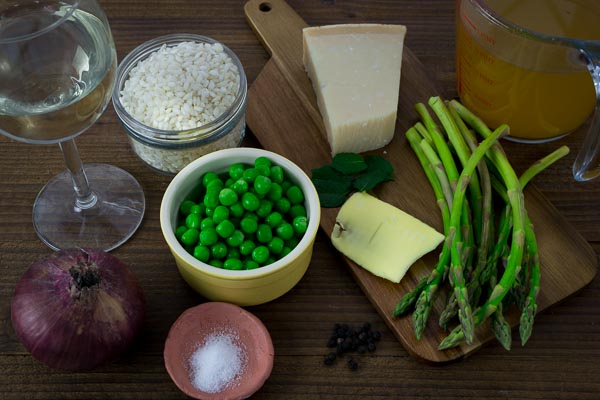
Preparazione: 10 minuti
Cottura: 45 minuti
For: 2 people
Preparation: 10 minutes
Cooking: 45 minutes
Ingredienti
- 250gr di asparagi
- 1/2 l di brodo vegetale
- 20gr di burro
- 1 cipolla
- 160gr riso arborio
- 75ml di vino bianco secco
- 50gr piselli sgusciati
- Parmigiano Reggiano
- foglie di menta
Ingredients
- 250gr asparagus spears
- 1/2 l vegetable stock
- 20gr butter
- 1 onion
- 160gr arborio rice
- 75ml dry white wine
- 50gr shelled peas
- Parmesan cheese
- mint leaves
Metodo / Method

Tagliate a metà gli asparagi. Riservate le punte e fate bollire i gambi. Rimuovete e lavorate in un alimentatore fino a quando non ottenete un purè. Mescolate metà del burro in una padella a fuoco basso. Aggiungete la cipolla sottilmente tagliata alla padella e cuocete per 10 minuti fino ad ammorbidire.
Cut the asparagus in half. Reserve the tips and boil the stalks. Remove and process in a food processor until puréed. Melt half the butter in a heavy-based frying pan over low heat. Add the thinly cut onion to the pan and cook for 10 minutes until softened.
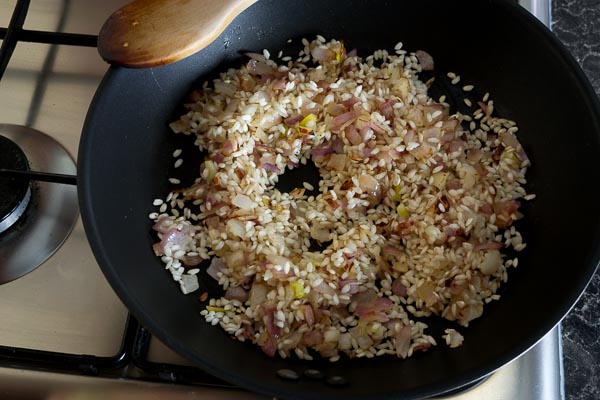
Aggiungete il riso e cuocete per un minuto. Versate il vino e lasciate che si assorbi. Mescolate il purè di asparagi.
Add the rice and cook for a minute. Pour in the wine and let absorb. Mix in the puréed asparagus.

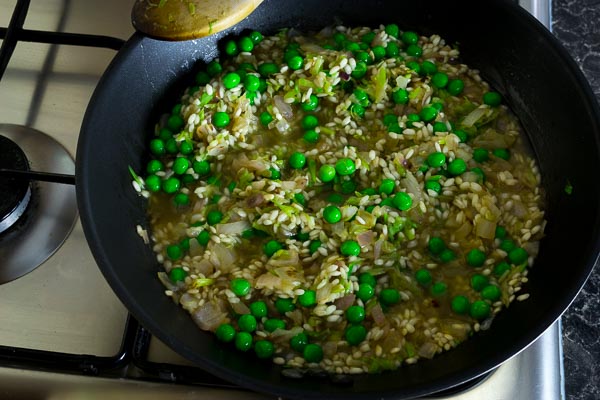
Aggiungete i piselli e il vino e cuocete, mescolando, fino ad assorbire. Aggiungete il brodo vegetale poco a poco. Lentamente cuocete a fuoco lento e mescolate frequentemente, fino a quando il brodo viene assorbito. Continuate ad aggiungere il brodo alla miscela e mescolate continuamente, per circa 16-18 minuti, finché il riso non diventi cremoso.
Add the peas and wine and cook, stirring, until absorbed. Add the stock little by little. Slowly simmer stirring frequently, until stock is absorbed. Keep adding stock to the mixture and stirring continuously, for about 16-18 minutes, until the rice is creamy.

Aggiungete il resto degli asparagi, il resto del burro e del parmigiano grattugiato. Togliete dal fuoco e aggiungete la menta tritata. Lasciate riposare per 2 minuti e servite.
Add the reserved asparagus tips, the rest of the butter and grated parmesan. Remove from the heat and add the chopped mint. Leave to stand for 2 minutes and serve.
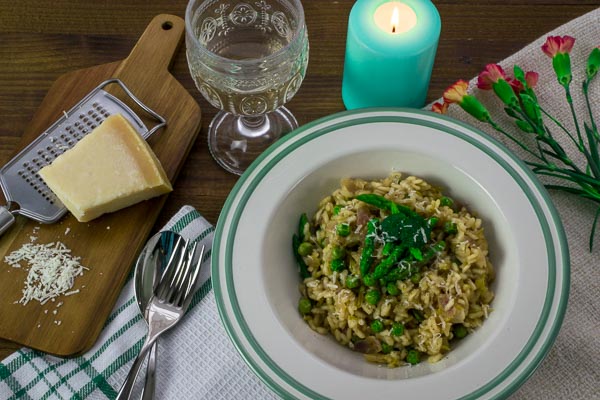
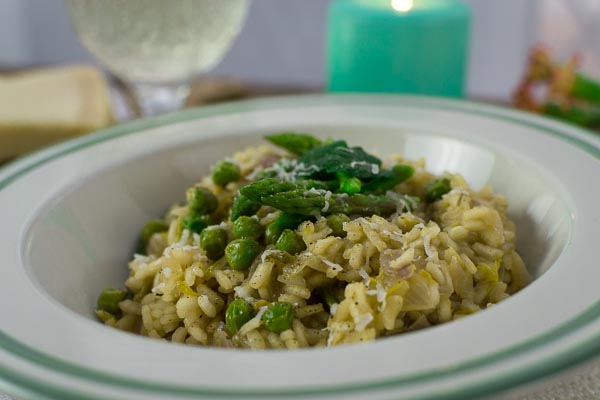
I hope you enjoyed preparing this dish as much as I did. Although it takes some time for the rice to cook properly and become creamy, the smell it leaves in your kitchen makes you look forward to having a nice hearty plate of risotto. In the years, this has become my favourite way of cooking rice. Sometimes, I even add some saffron to give my risotto more of a golden colour. As I mentioned in the introduction, you could add some braised veal and you would have a main right there.
Let me know how the cooking goes and please don't forget to tag me along on your photos on social media so I can see your creations too! To conclude today's lesson, go ahead and click the link below. In today's lesson, we'll be revising the ordinal numbers already mentioned in the first lesson and learn the rest in this lesson. Enjoy! x
